 This article or essay is a response to some typical growthist responses to the question posed by Mikhael Bornstein on a Quora forum here: "How long before our species realizes that overpopulation is the root cause to almost all of our global problems?. I describe how growthists narrow the range of their argument, what they leave out, and I analyse how they mistaken the hypothetical for the actual, acting as if the solutions they propose for obvious overpopulation problems, were already happening, when most probably never will.
This article or essay is a response to some typical growthist responses to the question posed by Mikhael Bornstein on a Quora forum here: "How long before our species realizes that overpopulation is the root cause to almost all of our global problems?. I describe how growthists narrow the range of their argument, what they leave out, and I analyse how they mistaken the hypothetical for the actual, acting as if the solutions they propose for obvious overpopulation problems, were already happening, when most probably never will.
The arguments I explore came from a US computer science professor, who wrote that he did not worry about population growth because he believed that the world is not overpopulated. His reasons for this were that human population is predicted to 'top out around 10 to 11 billion later this century', that there is plenty of food, energy and natural resources for 9-11 billion people, because these natural resources do not leave the earth and with advanced technology and inexpensive energy, we will be able to recycle them - except for fossil fuels, which he believes won't be needed beyond this century. He thinks that some 'under-developed' countries have an over-population problem because many of their governments are corrupt or anarchistic, impacting on food distribution and education. And, if women are not educated, they do not know about birth control or affordable birth control is not available. He thinks, however, that, in a few decades, most underdeveloped countries will be developed. [This is a belief that people have held since the 1950s or before,that it will all be fixed in a decade or two.] The professor thinks that the developing countries risk population decline and need immigration to maintain them. Those that are not growing, like Japan, need more adult diapers than baby diapers, he adds. He expresses concern that a bigger problem will be maintaining the world population in developed countries, without it decreasing too rapidly.
My responses
With all due respect, I find that Prof Farrages’s answer survives on the narrow range of values it canvasses. It is the values it leaves out that bring it down, along with the theoretical perspective that ignores how things are actually organised.
Other species and the natural world
A major value it fails to take into account is the natural world and other species. This part of the world is suffering terribly because of human expansion and it cannot cope. Our species had close relationships with other species and the natural world for almost all of its existence. Now we are being deprived of that due to human population growth and expansion, along with the constant growth in consumerism that our modern economies rely on. This is my number one complaint about population growth.
Inhuman mechanised farm production
There is also the terrible inhumanity of feedlots and battery farming, which are 'justified' economically because of the scale required to feed vast human populations. The effluent from this intensified farming wrecks rivers and the animals are often kept permanently on antibiotics because intensive farming raises infection risks.
High rise myopia and other health problems
Humans living in high-rises in dense cities are similar to battery hens in a number of ways. Their lack of outside activity causes myopia in children. High density means exposure to more infections, especially gastric, cold and flu. When these are treated with antibiotics they give rise to secondary problems, including antibiotic resistance and clostridium difficil, which can kill people, is becoming common, but often overlooked, especially in the elderly.
Food distribution and the profit motive
In theory there might be plenty of food, energy and natural resources for 9-11 billion people, but theory is not actuality. Food is not distributed according to need, but to income in our modern systems. Man does not live by bread alone, either.
Materials and energy resources, war and occupation
There are many resources that are scarce, for instance rare earth elements. Cobalt is a major driver of criminal international exploitation and environmental destruction in the Congo. New ways of producing cobalt won't stop that because people can still make money by using slave labour and violence to get the cobalt cheaply. Except in a command economy, new technologies are only taken up when the old are exhausted if the old can be exploited cheaply.
Petroleum is not as plentiful as it was; much of what is now classed as petroleum is actually lease condensate, coal-oil, vegetable oil, and the last two have major consequences, one with pollution and the other by wrecking wildlife habitat and landscapes. We are destroying orangutan habitat for palm oil, just to name one horrendous consequence. If petroleum were plentiful in relation to our population growth and consumption, then we would not have petroleum wars in the Middle East, but we do, with US-NATO the main cause, because it does not want Russia, China or Middle Eastern Countries to have any control over fossil fuels, even those on their doorsteps. The US does the same thing to South American oil-producing states and US-NATO sponsors wars and warlords in places like Somalia because US-NATO presence there means they are close by the petroleum producing states.
Coal is being exploited at a rate and scale never seen before - because it is there, because it is cheaper. Cheap is what drives most economic activity, using slavery, stealing land, and creating wars. (By the way, my quals on this is that I am Sheila Newman Ed. The Final Energy Crisis, Pluto Press, UK, 1st and 2nd edition (co-edited), which were collections of different scientists writing about future prospects for energy.)
Non-fossil fuel energy resources
Yes, there are non-fossil fuel technologies, but they are not 'cheap'. Also they carry a lot of embodied energy in the materials that must be mined to create them. The reality is that they (a) require organisation that the desire for cheapness in the Anglosphere makes impossible (b) they can produce for smaller, lower consumption populations, but the savage capitalism that characterises the Anglosphere demands more and more people to consume more and more stuff - and that needs fossil fuel - so that brings us back to the lowest common denominator again.
Population and democracy
Population growth costs in all kinds of ways. A bigger population means a smaller you. The discouragement of nationalism in favour of open borders by globalists means that nations cannot organise properly to take charge of their population numbers so that they live the lives they want, with the values they want, rather than suffering the consequences of theoretical arguments for more population growth.
The writer characterises third world overpopulation as partly caused by corrupt governments, but the governments in the first world are increasingly corrupt as well, hell-bent on inflating the cost of resources by driving up population growth. Democracy is disappearing in the Anglosphere, as I have implied already.
The Aging population
The writer repeats an old furphy of the 'aging population'. The aging population argument completely ignores the fact that the world's population, including that of almost all 'developed' countries, is bigger than it has ever been, by an order of magnitude. These huge numbers reflect the availability of cheap fossil fuels, which is now in question.
Once again there is a theoretical perspective that pretends that it is reasonable, cost-free, democratic and desirable to engineer population growth to not only maintain this unprecedented population behemoth, but to try and increase it! At some stage the number of children has to go down in proportion to the number of aged: other wise we grow forever and life will become more and more unaffordable.
Population pressure on land and housing prices pushes up the cost of living so high that it becomes too expensive for anyone who does not have high wages - which includes elderly people. This problem resolves itself if you stop importing economic immigrants and allow populations to adjust themselves downwards naturally. Then the prices of all vital resources, including housing and land, come down, and the cost of living with it. This is what has happened in Japan. People are actually returning to Japan because it is becoming such a nice place to live and the cost of living is going down.
One more thing: comparing children from 0-15yrs old with say, people over 65 is an unreal comparison, because it generalises between two cohorts of unequal size. Furthermore, as many young people would know, especially in 'developed' countries, young people may spend much longer as 'dependents' either on their parents or on the state, because they cannot get enough work and because education is increasingly expensive.
Educating girls and immigration
In my country girls are relatively well educated, but our population keeps growing due to mass economic immigration, invited by government and growth lobby.
This is also happening in the 'third world', for instance, Africa. African tribal borders and an associated orderly Africa have been destroyed and there are constantly immigrating and emigrating populations, many of them going in and out of cities, adding both to marriage and fertility opportunities (previously limited by need to find partners within your tribe) in much the same way as is happening in the countries of the first world that are receiving mass immigration.
Immigration is a fundamental driver of population growth. Natural populations in most species, including our own, are small and endogamous. That is, tribe members marry other tribe members. This endogamy is a fertility opportunity limiter. Mass immigration is a fertility accelerator because it stimulates exogamy - which means marrying outside your tribe, which means increasing the proportion of people in a society who reproduce, which was usually limited before our era of globalisation. (See Sheila Newman, Demography Territory Law: The Rules of Animal and Human Populations).
The problem with the theoretical perspective
This theoretical perspective is common to the growth lobby, which tries to minimise problems by talking about how they might be fixed one day as if that were actually happening. Where I live, population growth in Australia is causing massive problems and 74 % of Australians want government to stop artificially engineering population growth (60+ % fueled by mass economic immigration and 80% of New South Wales' last year). See Betts & Birrell: Australian voters’ views on immigration policy: Full Report. One of the main reasons people want population growth to stop is due to exponentially rising traffic congestion, housing prices, homelessness, and changes to laws to remove peoples' right to object to draconian unbelievably expensive infrastructure 'solutions' that don't even solve the problems, but make engineering firms rich and cause engineering technofix ideology to dominate. The growth lobbyists (property developers and financiers - plus upstream and downstream industries) now dominate the mass media and the government and constantly pretend that all this can go on if we 'provide infrastructure'. Part of what is wrong with that is that property development is carried out on bushland and green spaces because they can be bought more cheaply and then rezoned. It also competes with things communities created for themselves. For instance there has been a rash of closing down 50m community swimming pools because population growth has forced up the ‘value’ of the land and developers think that they can make more money by building for more intensive occupaton, using what was public land.
The reality is land-speculation, although the theory is 'smart growth'. And we don't want more infrastructure or more population, because infrastructure is closing in on us even though inadequate to cope with the growth. There are actually systems that deal with planning better, such as France's, but those systems also discourage population growth, which is rightly seen as a cost to the state, which develops the land and subsidises the housing. (On France see Sheila Newman, The Growth Lobby in Australia and its Absence in France:




 Lord Mayor Clover Moore has nothing to congratulate herself on with regard to homelessness in Sydney. The City of Sydney’s most recent street count has revealed that homelessness has risen and crisis shelters are at capacity. Although the City has been collecting levies from developers to create affordable housing since 2004, it has only created 835 new affordable housing dwellings in that time. Whilst the *official* number of homeless in Sydney reached 592 in August 2019 (with so many more couch-surfing and living on credit), Australia has continued to import approximately one million immigrants every two years, pushing up the price of housing and causing pressure on Sydney's very scarce land, to the extent that NSW State Premier, Gladys Berejiklian asked the Federal Government to halve the immigration numbers - to no avail. Lendlease private developments is
Lord Mayor Clover Moore has nothing to congratulate herself on with regard to homelessness in Sydney. The City of Sydney’s most recent street count has revealed that homelessness has risen and crisis shelters are at capacity. Although the City has been collecting levies from developers to create affordable housing since 2004, it has only created 835 new affordable housing dwellings in that time. Whilst the *official* number of homeless in Sydney reached 592 in August 2019 (with so many more couch-surfing and living on credit), Australia has continued to import approximately one million immigrants every two years, pushing up the price of housing and causing pressure on Sydney's very scarce land, to the extent that NSW State Premier, Gladys Berejiklian asked the Federal Government to halve the immigration numbers - to no avail. Lendlease private developments is 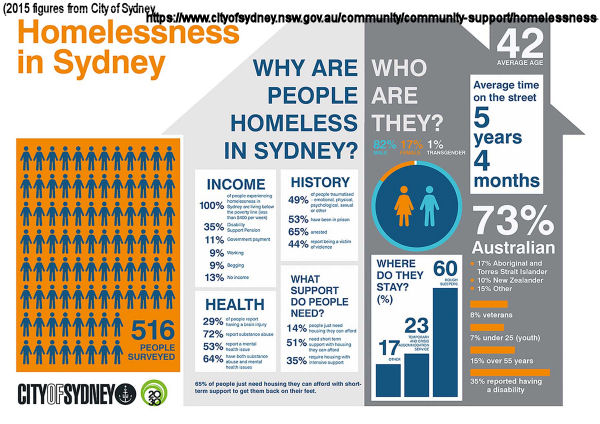
 "Your program and so many on the ABC ignore the real prospect of widespread social, economic and environmental breakdown consequent on a human population having exceeded the long term carrying capacity of Nature. The ABC in its general coverage assumes a continuation of Business as Usual. Climate change, if present trends continue leads to a world 3 – 4 degrees warmer at century’s end. (David Attenborough in his recent TV program on climate change used the figures 3 - 6 degrees.) Together with declines in soil quality, water availability, food shortages and massive biodiversity loss these things have many scientists foreshadowing an imminent reduction in the global human population and a world in chaos."
"Your program and so many on the ABC ignore the real prospect of widespread social, economic and environmental breakdown consequent on a human population having exceeded the long term carrying capacity of Nature. The ABC in its general coverage assumes a continuation of Business as Usual. Climate change, if present trends continue leads to a world 3 – 4 degrees warmer at century’s end. (David Attenborough in his recent TV program on climate change used the figures 3 - 6 degrees.) Together with declines in soil quality, water availability, food shortages and massive biodiversity loss these things have many scientists foreshadowing an imminent reduction in the global human population and a world in chaos." 
 Tomorrow it will be exactly 10 years since Kelvin Thomson spoke to the Parliament describing increasing population as the underlying cause of the world’s problems. He listed each of them - global warming, food crisis, water shortages, housing affordability, overcrowded cities, traffic congestion, species extinctions, fisheries collapse, increasing prices, waste, terrorism and war - and described the role that population growth was playing in fuelling them.
Tomorrow it will be exactly 10 years since Kelvin Thomson spoke to the Parliament describing increasing population as the underlying cause of the world’s problems. He listed each of them - global warming, food crisis, water shortages, housing affordability, overcrowded cities, traffic congestion, species extinctions, fisheries collapse, increasing prices, waste, terrorism and war - and described the role that population growth was playing in fuelling them. It has been great to re-live the Apollo 11 Moon Landing’s 50 th Anniversary. What a monumental achievement and tribute to human intellectual candlepower, endeavour and above all courage. I was a Year 9 student at the time; like other classes we downed tools to watch it unfold. Our teachers were just as astonished by the audacity and precision of the Landing as we were. I – and I think most of the people who I talked with or heard from at that time – had a very rosy view of the future. Yes we were involved in a stupid war in Vietnam, but I thought the Second World War and the Holocaust were so wicked and so evil that we’d learned from that, and that there was a very strong worldwide appetite for peace. I thought that war and conflict would become a thing of the past.
It has been great to re-live the Apollo 11 Moon Landing’s 50 th Anniversary. What a monumental achievement and tribute to human intellectual candlepower, endeavour and above all courage. I was a Year 9 student at the time; like other classes we downed tools to watch it unfold. Our teachers were just as astonished by the audacity and precision of the Landing as we were. I – and I think most of the people who I talked with or heard from at that time – had a very rosy view of the future. Yes we were involved in a stupid war in Vietnam, but I thought the Second World War and the Holocaust were so wicked and so evil that we’d learned from that, and that there was a very strong worldwide appetite for peace. I thought that war and conflict would become a thing of the past.
 The Sydney Morning Herald of June 4th this year reported that Kristina Keneally, labor's Shadow Minister for Home Affairs, would advocate the economic importance of immigration - a sign the Opposition is willing to make the case for a bigger Australia as it considers its post-election policy platform. It would be a policy that was against the wishes of a majority of Australians and would be destructive economically, environmentally and socially.
The Sydney Morning Herald of June 4th this year reported that Kristina Keneally, labor's Shadow Minister for Home Affairs, would advocate the economic importance of immigration - a sign the Opposition is willing to make the case for a bigger Australia as it considers its post-election policy platform. It would be a policy that was against the wishes of a majority of Australians and would be destructive economically, environmentally and socially.


 In this 1973 video, the Club of Rome envision a world with far less need to work long hours and with a benign system of international cooperation. I think that they would be horrified if they could see what has actually happened, and the role that the IMF has taken. I think the Club of Rome got the material settings right, though.
In this 1973 video, the Club of Rome envision a world with far less need to work long hours and with a benign system of international cooperation. I think that they would be horrified if they could see what has actually happened, and the role that the IMF has taken. I think the Club of Rome got the material settings right, though.
 The Hon. Kelvin Thomson, former Federal Member for Wills, is joining the Sustainable Australia Party. Mr Thomson served as an Australian Labor Party Councillor for the City of Coburg from 1981 to 1988, Member of the Victorian Parliament for Pascoe Vale from 1988 to 1996, and Federal Labor Member for Wills for over 20 years from 1996 until the 2016 Election. Mr Thomson will be advising Sustainable Australia’s first elected Member of Parliament, Mr. Clifford Hayes, who was elected as a Legislative Councillor for the Southern Metropolitan Region at the recent Victorian election.
The Hon. Kelvin Thomson, former Federal Member for Wills, is joining the Sustainable Australia Party. Mr Thomson served as an Australian Labor Party Councillor for the City of Coburg from 1981 to 1988, Member of the Victorian Parliament for Pascoe Vale from 1988 to 1996, and Federal Labor Member for Wills for over 20 years from 1996 until the 2016 Election. Mr Thomson will be advising Sustainable Australia’s first elected Member of Parliament, Mr. Clifford Hayes, who was elected as a Legislative Councillor for the Southern Metropolitan Region at the recent Victorian election.
 "Media resistance has always been one of the big problems," says Sandra Kanck, who came from a family where there were seven children and she learned early that one wage did not go as far for seven as it might for fewer. From 1994-2009 Sandra served as an Australian Democrats’ Member of the upper house of the South Australian Parliament. Her ‘maiden’ speech in parliament was – predictably for those who know her – about population. For more than nine years Sandra Kanck has been either President or Vice-President of SPA, mostly the former, including reluctantly juggling the role of Acting Treasurer for three months during one of her stints as President.
"Media resistance has always been one of the big problems," says Sandra Kanck, who came from a family where there were seven children and she learned early that one wage did not go as far for seven as it might for fewer. From 1994-2009 Sandra served as an Australian Democrats’ Member of the upper house of the South Australian Parliament. Her ‘maiden’ speech in parliament was – predictably for those who know her – about population. For more than nine years Sandra Kanck has been either President or Vice-President of SPA, mostly the former, including reluctantly juggling the role of Acting Treasurer for three months during one of her stints as President.  Dear 7.30.
Dear 7.30. Ex Labor leader, Mark Latham, recently joined Pauline Hanson's One Nation Party and will be running for the NSW legislative council at the next state election. Here is his 8-Point Plan to "save Sydney “suffocating” from overpopulation and overdevelopment."
Ex Labor leader, Mark Latham, recently joined Pauline Hanson's One Nation Party and will be running for the NSW legislative council at the next state election. Here is his 8-Point Plan to "save Sydney “suffocating” from overpopulation and overdevelopment." BRAG has always tried to remain unaligned politically but the plans the Andrews’ Government has for centralizing planning, if re-elected, require us to take a stand. The plans are being developed in secret by Labor to ensure that massive changes can be rammed through, if re-elected, to push at least 70% of new medium to high density housing into the middle suburbs of Melbourne. What this means is that you can expect multi-storey blocks of flats in your local street and neither you nor your council will be able to do a thing about it. You will have no right to be advised, object or appeal and the first indication will be when construction commences.
BRAG has always tried to remain unaligned politically but the plans the Andrews’ Government has for centralizing planning, if re-elected, require us to take a stand. The plans are being developed in secret by Labor to ensure that massive changes can be rammed through, if re-elected, to push at least 70% of new medium to high density housing into the middle suburbs of Melbourne. What this means is that you can expect multi-storey blocks of flats in your local street and neither you nor your council will be able to do a thing about it. You will have no right to be advised, object or appeal and the first indication will be when construction commences.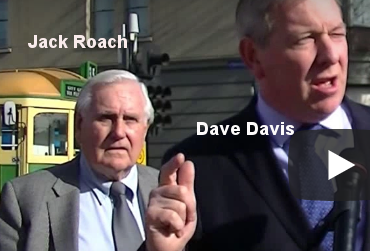
 There have been many news headlines about an article in the Lancet,
There have been many news headlines about an article in the Lancet,  "Only the Liberal Party will protect the amenity and character of our neighbourhoods and rural hinterland," says Russell Joseph, Liberal Candidate for Nepean. We don't often publish statements from the major parties, but this is the first one we know of that looks at protecting the Mornington Peninsula. The Peninsula is an incredibly biodiverse part of South-Eastern Australia, hardly explored to date in terms of paleontology, rapidly losing its native fauna and flora. The undeniable fact that governments since Jeff Kennett have promoted destructive population growth here makes any policy to protect it extremely important. We will publish statements from any other political party that has a plan to protect the Mornington Peninsula from overpopulation.
"Only the Liberal Party will protect the amenity and character of our neighbourhoods and rural hinterland," says Russell Joseph, Liberal Candidate for Nepean. We don't often publish statements from the major parties, but this is the first one we know of that looks at protecting the Mornington Peninsula. The Peninsula is an incredibly biodiverse part of South-Eastern Australia, hardly explored to date in terms of paleontology, rapidly losing its native fauna and flora. The undeniable fact that governments since Jeff Kennett have promoted destructive population growth here makes any policy to protect it extremely important. We will publish statements from any other political party that has a plan to protect the Mornington Peninsula from overpopulation.
 Scott Morrison
Scott Morrison 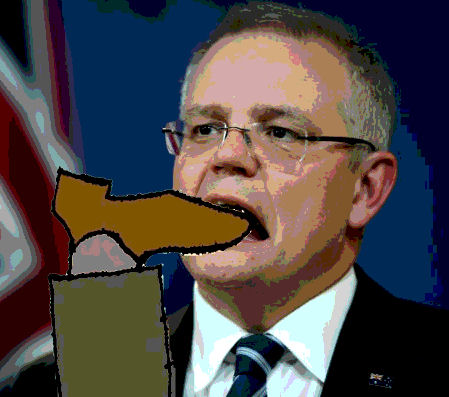
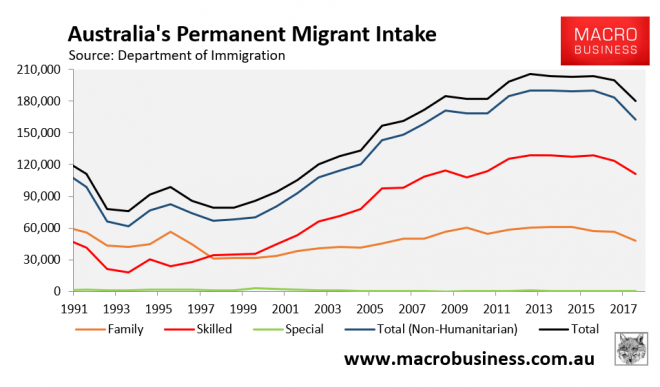
 2.30PM - Sunday 7th of October 2018. Open Public Meeting Stop Over-Development in Melbourne! Speakers: Professor Bob Birrell, Professor Michael Buxton, Mary Drost OAM Planning Backlash, Jack Roach, Boroondara Residents' Action Group, Leith van Onselen- economist. Venue: Zelman Room, Hawthorn Arts Centre, 360 Burwood Road, Hawthorne.
2.30PM - Sunday 7th of October 2018. Open Public Meeting Stop Over-Development in Melbourne! Speakers: Professor Bob Birrell, Professor Michael Buxton, Mary Drost OAM Planning Backlash, Jack Roach, Boroondara Residents' Action Group, Leith van Onselen- economist. Venue: Zelman Room, Hawthorn Arts Centre, 360 Burwood Road, Hawthorne.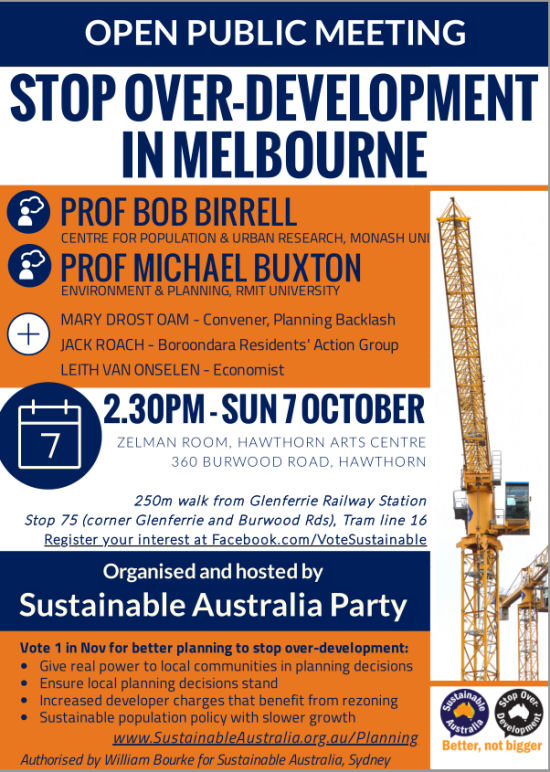
 The Victorian branch of Sustainable Population Australia (SPA) expresses deep concern that Australia will reach 25 million people this week. In anticipation of this milestone, SPA literally took to the sky on the issue by flying a small plane over Melbourne to see first hand whether bigger means better.
The Victorian branch of Sustainable Population Australia (SPA) expresses deep concern that Australia will reach 25 million people this week. In anticipation of this milestone, SPA literally took to the sky on the issue by flying a small plane over Melbourne to see first hand whether bigger means better.
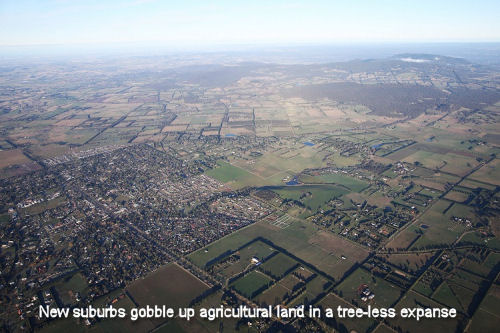

 House prices are higher in Sydney and Melbourne than in almost all other developed-nation cities with the result that most young households cannot afford to buy a detached house. Why? Part of the explanation is a combination of generous tax benefits to investors and upgrading home owners. This has prompted massive investment in dwellings, but mostly in established detached housing. This investment drives up prices without adding to supply. New research report, 3 July 2018Bob Birrell and Ernest Healy,
House prices are higher in Sydney and Melbourne than in almost all other developed-nation cities with the result that most young households cannot afford to buy a detached house. Why? Part of the explanation is a combination of generous tax benefits to investors and upgrading home owners. This has prompted massive investment in dwellings, but mostly in established detached housing. This investment drives up prices without adding to supply. New research report, 3 July 2018Bob Birrell and Ernest Healy,  How dare the Urban Development Institute of Australia tell the State Government that it should set housing targets for each council to cope with Melbourne's rapid population growth and then if we don't meet the targets they set we will be victimised. [1] They even specifically mentioned Boroondara and Stonnington as not pulling their weight and referred to NIMBYs. As a resident of Boroondara I can assure the Development Institute that Boroondara is being flooded with buildings to such an extent that the whole neighbourhood character is being ruined, what on earth do they want. High rise on every suburban street?
How dare the Urban Development Institute of Australia tell the State Government that it should set housing targets for each council to cope with Melbourne's rapid population growth and then if we don't meet the targets they set we will be victimised. [1] They even specifically mentioned Boroondara and Stonnington as not pulling their weight and referred to NIMBYs. As a resident of Boroondara I can assure the Development Institute that Boroondara is being flooded with buildings to such an extent that the whole neighbourhood character is being ruined, what on earth do they want. High rise on every suburban street?
 Most people lack the basic education in arithmetic, geography and logistics to judge whether they are overpopulated, to compare population densities between regions, to factor in import and export, and, most importantly, to understand how waste-disposal requires natural 'services' or to understand that they are themselves, microbiologically, a part of nature, but that each one of us now is extended into a kind of per capita earth moving and processing factory for creating dead stuff. This article evolved from a response to a quora question and appears in its original form here: [
Most people lack the basic education in arithmetic, geography and logistics to judge whether they are overpopulated, to compare population densities between regions, to factor in import and export, and, most importantly, to understand how waste-disposal requires natural 'services' or to understand that they are themselves, microbiologically, a part of nature, but that each one of us now is extended into a kind of per capita earth moving and processing factory for creating dead stuff. This article evolved from a response to a quora question and appears in its original form here: [
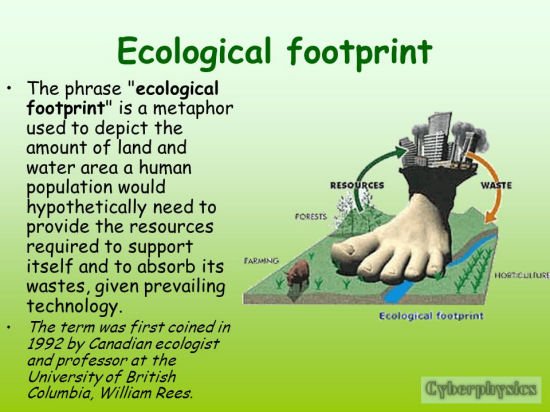
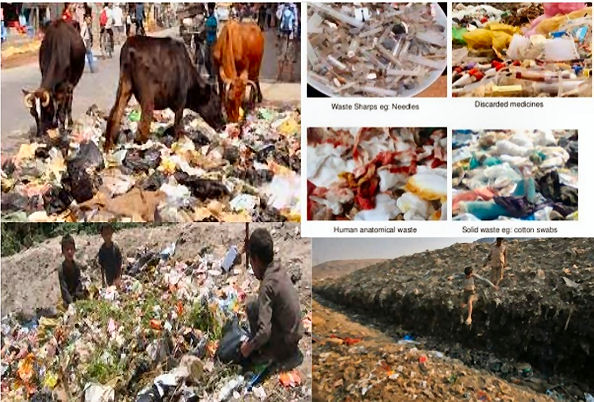
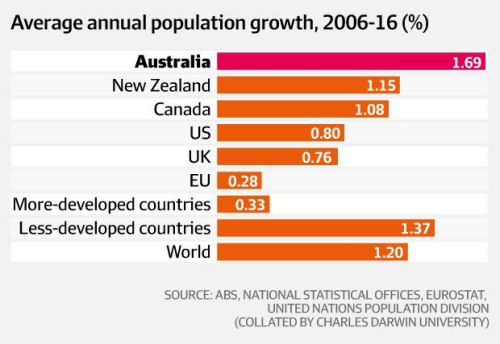 Australia's population growth has exceeded every other major developed nation over the last decade. Political & economic elites are flooding our country with immigrants for the purpose of lowering wages and increasing demand for real estate and headline GDP growth. Disgraceful. In Dick Smith’s words: We are conducting a risky experiment that has no parallel among developed nations, with a population growth rate that exceeds most developing countries.
Australia's population growth has exceeded every other major developed nation over the last decade. Political & economic elites are flooding our country with immigrants for the purpose of lowering wages and increasing demand for real estate and headline GDP growth. Disgraceful. In Dick Smith’s words: We are conducting a risky experiment that has no parallel among developed nations, with a population growth rate that exceeds most developing countries. 
 This is the first time, to our knowledge, that the ABC has departed from its growthist mantra, allowing its reporters to describe the problem and really let the public know how bad it is. "We need to focus on corruption, population to halt biodiversity loss." Researchers say targets for biodiversity loss ignore key drivers such as human population and corruption." Article by ABC Science, environment reporter Nick Kilvert. First published here:
This is the first time, to our knowledge, that the ABC has departed from its growthist mantra, allowing its reporters to describe the problem and really let the public know how bad it is. "We need to focus on corruption, population to halt biodiversity loss." Researchers say targets for biodiversity loss ignore key drivers such as human population and corruption." Article by ABC Science, environment reporter Nick Kilvert. First published here: 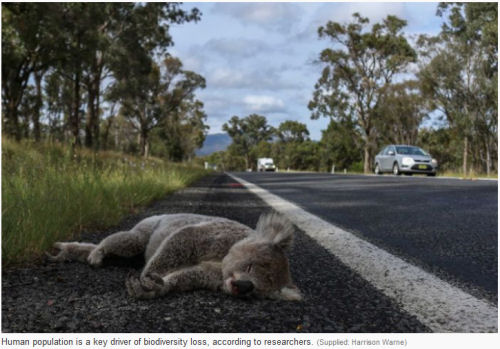
 This article or essay is a response to some typical growthist responses to the question posed by Mikhael Bornstein on a Quora forum here:
This article or essay is a response to some typical growthist responses to the question posed by Mikhael Bornstein on a Quora forum here: 

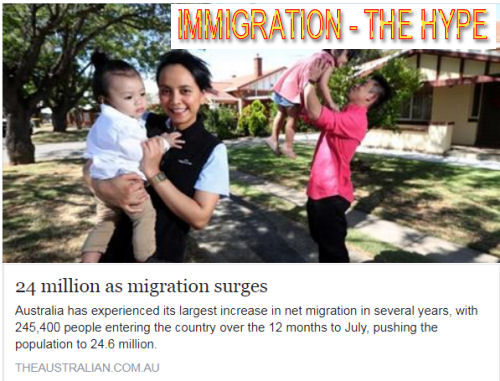
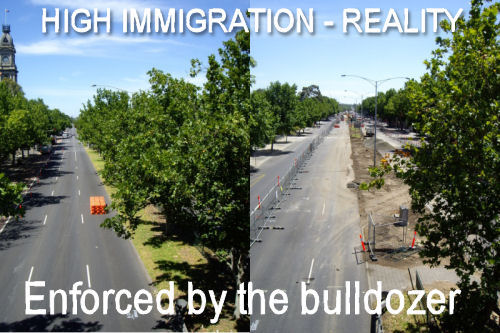


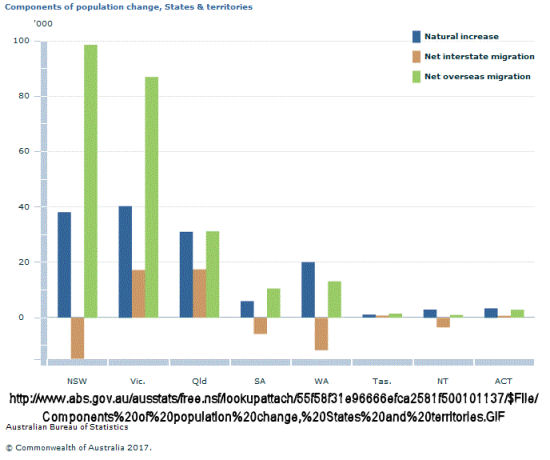
 (Article by Sally Pepper.) On New Year's Day, January 1st 2018, as I surfaced around 10.00 a.m, I heard on the news that power prices and tolls on roads around Melbourne will both increase and, that this year many Victorians will experience additional economic hardship. My immediate defensive thought was, "Well I don't use tollroads and I guess I can be more frugal with my use of gas and electricity."
(Article by Sally Pepper.) On New Year's Day, January 1st 2018, as I surfaced around 10.00 a.m, I heard on the news that power prices and tolls on roads around Melbourne will both increase and, that this year many Victorians will experience additional economic hardship. My immediate defensive thought was, "Well I don't use tollroads and I guess I can be more frugal with my use of gas and electricity."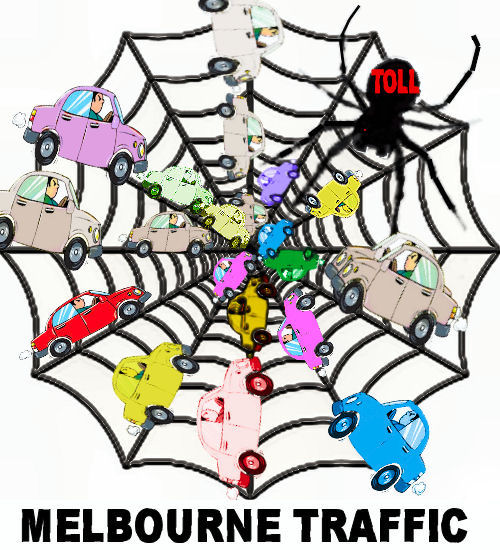


 What does happiness mean to you? We tend to search for it in material things, substances, and career achievements, but often lose sight of what really matters to us in the process. London-based artist and animator Steve Cutts is taking a long hard look at this ‘rat race’ to which we’ve all found ourselves tied, and is examining our modern sources of joy in a satirical new short film that depicts us as the ‘rats’ we’ve become in the eyes of the system. It’s titled after that mysterious high we’re always chasing; “Happiness.” Take 4 minutes out of your busy day and watch the clip for yourself below, and tell us in the comments if you think Cutts hit the nail on the head.
What does happiness mean to you? We tend to search for it in material things, substances, and career achievements, but often lose sight of what really matters to us in the process. London-based artist and animator Steve Cutts is taking a long hard look at this ‘rat race’ to which we’ve all found ourselves tied, and is examining our modern sources of joy in a satirical new short film that depicts us as the ‘rats’ we’ve become in the eyes of the system. It’s titled after that mysterious high we’re always chasing; “Happiness.” Take 4 minutes out of your busy day and watch the clip for yourself below, and tell us in the comments if you think Cutts hit the nail on the head.
 Hungary’s Prime Minister Viktor Orban has apparently called on Hungarians to beware of the power of the Sith in his latest speech on migration crisis in Europe. He also declared Eastern and Central Europe the last ‘migrant-free zone.’ "We should never underestimate the power of the dark side," the prime minister said, referencing Star Wars as he referred to the plots of those behind the “migrant invasion,” adding that they “have no solid structure but extensive networks.” Article first published 23 October on RT with the title,
Hungary’s Prime Minister Viktor Orban has apparently called on Hungarians to beware of the power of the Sith in his latest speech on migration crisis in Europe. He also declared Eastern and Central Europe the last ‘migrant-free zone.’ "We should never underestimate the power of the dark side," the prime minister said, referencing Star Wars as he referred to the plots of those behind the “migrant invasion,” adding that they “have no solid structure but extensive networks.” Article first published 23 October on RT with the title,
Recent comments